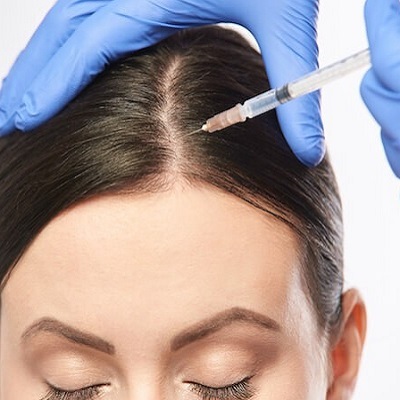Hair loss can significantly impact self-esteem and overall confidence, prompting many to explore various treatment options. One of the most promising solutions gaining traction is Platelet-Rich Plasma (PRP) therapy. This innovative, non-surgical procedure harnesses the body’s natural healing mechanisms to promote hair growth. However, many individuals considering PRP therapy are curious about its longevity. Specifically, how long do PRP results last for hair? This blog will delve into the effectiveness of PRP, factors influencing its results, and how to maximize its benefits.
Understanding PRP Therapy:
PRP therapy in Islamabad begins with a simple process. A small amount of the patient’s blood is drawn and then processed in a centrifuge to separate the platelet-rich plasma from other blood components. This plasma is rich in growth factors, which play a crucial role in tissue regeneration and healing. When injected into the scalp, PRP stimulates the hair follicles, enhancing blood flow and promoting cellular activity, leading to increased hair growth and density.
Typically, a series of three to four treatments is recommended, spaced about a month apart. Patients often notice gradual improvements in hair thickness and growth over several months after the initial sessions.
Longevity of PRP Results:
On average, the results from PRP therapy can last between 12 to 18 months, depending on several factors. This timeframe can vary based on individual circumstances, making it essential to understand what influences the longevity of PRP results.
Factors Influencing the Duration of PRP Results:
1. Severity of Hair Loss:
The effectiveness of PRP can vary depending on the extent of hair loss. Individuals with early-stage thinning or mild to moderate hair loss tend to respond better to treatment, often enjoying longer-lasting results. In contrast, those with advanced hair loss or completely inactive follicles may not experience the same degree of improvement, necessitating more frequent maintenance treatments.
2. Age and Genetics:
Age and genetic factors can also affect how long PRP results last. Younger patients with more active hair follicles are generally more likely to experience longer-lasting results. In contrast, older patients or those with genetic predispositions to hair loss may find their results diminishing more quickly, requiring ongoing treatments to maintain hair density.
3. Underlying Causes of Hair Loss:
The root cause of hair loss plays a significant role in PRP effectiveness. Conditions like androgenetic alopecia (male and female pattern baldness) typically respond well to PRP. However, if hair loss is due to hormonal imbalances, stress, or other health issues, the effectiveness of PRP may vary, and additional treatments may be necessary.
4. Frequency of Maintenance Treatments:
Following the initial series of PRP sessions, maintenance treatments are crucial for prolonging results. Most experts recommend follow-up sessions every 4 to 6 months to sustain hair growth. The consistency of these maintenance treatments can significantly impact how long the results last, with regular sessions helping to keep hair follicles stimulated and healthy.
Optimizing PRP Results:
To maximize the benefits of PRP therapy, patients can take several proactive steps:
- Maintain a Healthy Lifestyle: A balanced diet rich in vitamins and minerals, regular exercise, and adequate hydration can support overall hair health. Foods rich in protein, iron, and omega-3 fatty acids can be particularly beneficial.
- Practice Scalp Care: Keeping the scalp clean and free from excess oil or product buildup can create an optimal environment for hair growth. Gentle scalp massages can also improve blood circulation.
- Avoid Stress: Chronic stress can exacerbate hair loss, so practicing stress-reduction techniques such as meditation, yoga, or mindfulness can be advantageous.
- Consult with a Specialist: Regular follow-ups with a hair restoration specialist can ensure that any underlying issues contributing to hair loss are addressed. A tailored treatment plan can help maintain the effectiveness of PRP therapy.
Conclusion:
PRP therapy offers a promising solution for those struggling with hair loss. While results can last between 12 to 18 months, several factors influence the longevity of these results, including the severity of hair loss, age, underlying causes, and the frequency of maintenance treatments. By understanding these factors and taking proactive steps to support hair health, patients can maximize the benefits of PRP therapy and enjoy a fuller, healthier head of hair for years to come.
If you are considering PRP treatment for hair restoration, it is essential to consult with a qualified specialist who can assess your unique situation and develop a personalized treatment plan. With the right approach, PRP therapy can help you regain not only your hair but also your confidence.
For more information visit Dynamic Clinic PK



